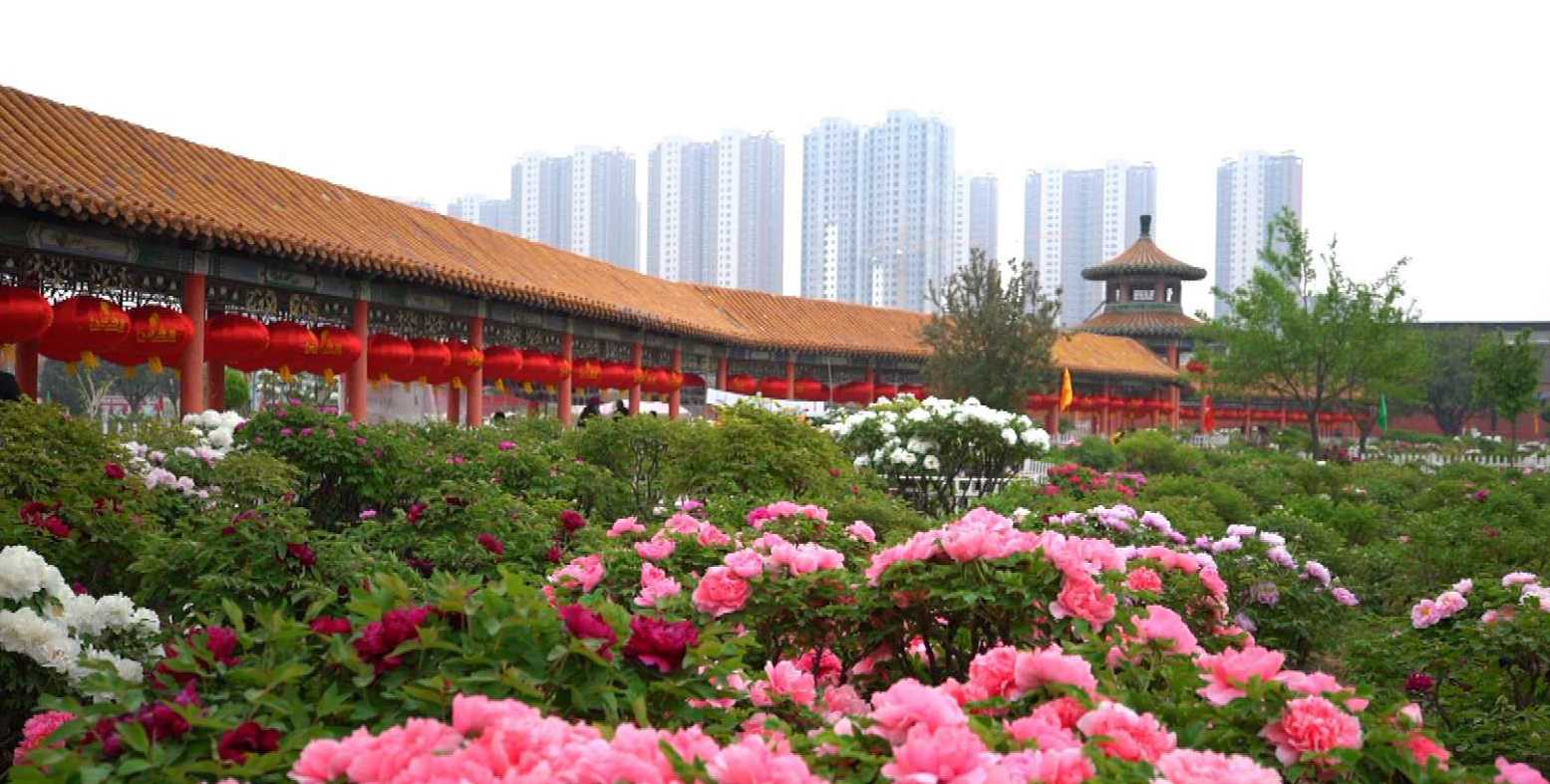Peony in bloom: poverty alleviation efforts blossom in Heze city
28 July, 2019

It is a city steeped in idyllic beauty. Patches of bright peony blossoms are sprinkled among its fertile lands with the Yellow River winding through the pleasant landscape. Yet it is a city mired in poverty. It has long been at the bottom of the province in per capita GDP, being widely considered as the province’s poorest city. This staggering contrast of beauty and poverty coexists in Heze city.
Situated in the westernmost part of Shandong province, Heze borders Henan, Anhui and Jiangsu provinces. The city is home to 8.77 million inhabitants, having a larger population than over 100 countries in the world. Among them, about 460,300, at the end of 2017, were living below the provincial poverty threshold (about $525), the highest number among all cities in the province.
As targeted poverty alleviation became a government priority in China since late-2013, Heze has been exploring its own development paths that play to its strengths in the fight against poverty. According to government statistics, in 2018 the local GDP surpassed the 300-billion-yuan ($44.8 billion) mark unprecedentedly, an increase of 7.9 percent over the previous year, making it the fastest economically-growing city within the province. Since 2014, the poverty rate has dropped from 15.7 percent to less than 1 percent.
Previously a well-known poverty-stricken city, Heze has now become a paradigm of poverty alleviation. People’s Daily Online visited several villages in Heze city to find out the secrets that lie behind its economic boom.
Fragrant path to wealth
Among all the business models in Heze, peony plays an indispensable role. The city, hailed as “China’s capital of peony”, has a 1,400-year history of peony cultivation. As China's largest peony base, Heze boasts a total of 32,400 hectares of peony farmland with more than 1,200 varieties available.
In recent years, Heze’s peony industry has embarked on a road of industrialization as local authorities rolled out a variety of policies to support the cultivation and processing of peonies. Peonies are no longer used only for their beauty but also for producing goods including seed oil, tea, cosmetics and herbal medicine. In 2018, Heze’s output value of the peony industry exceeded 1.1 billion US dollars, providing great impetus for the city’s poverty alleviation.
“As for the peony, particularly in terms of cultivating, the natural conditions here are very favorable. Many villagers know very well how to cultivate peony. Moreover, the soil here is suitable for planting peony. Thus, many poor households or poor villagers can engage themselves in peony cultivation with easy access, and they can quickly learn the knowledge of this field,” said Li Hao, vice president of Haihui Mall of peony products.
During an inspection tour to Shandong in 2013, Chinese President Xi Jinping visited Heze’s peony industry base. He was impressed by the added value of peony developed by the city, and stressed the importance of suiting one’s measures to local conditions when it comes to poverty alleviation.
Inspired by President Xi’s high recognition of peony industry, local villagers and entrepreneurs have gained enthusiasm and confidence in the industry. Guo Haiying, founder of Yueru Agricultural Development CO., Ltd., is among them. Her company, also serving as a targeted poverty alleviation industrial base, has helped local poor people make a better living.
“In 2013, President Xi came to Heze and proposed to develop the peony industry. After this, we started to cultivate the land and plant the flower. We mainly hire registered poverty-stricken households. Until now, we have arranged work for approximately 60 people from three nearby villages,” Guo said.
The peony industry in Heze has blossomed into one of the pillars of the city’s poverty alleviation campaign, helping over 100,000 people largely rid themselves of poverty. The city produces 4 million peony flowers annually, some of which are exported to over 20 countries around the world. There are over 120 companies in the region engaging in peony production, processing and sales. Over 240 kinds of peony-related products have been developed, and the industry begins to spread its tentacles to medicine, tourism, cultural and creative sectors.
“The peony industry is a sunrise industry, which is also a name card of Heze. I feel very confident about the peony industry and feel very enthusiastic about it,” said Guo.
Source:
TAG(s):
